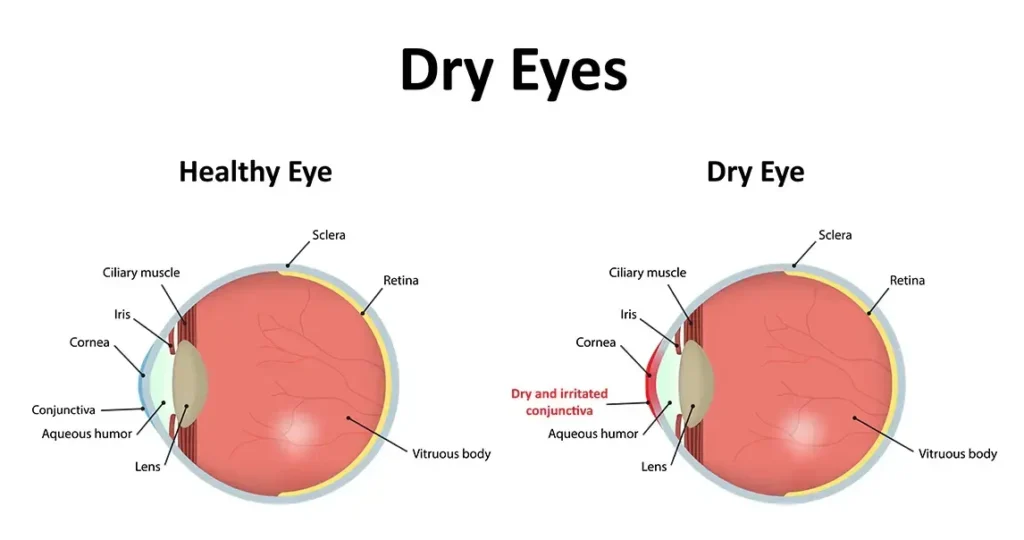DRY EYE
Dry eye is a condition in which a person doesn’t have enough quality tears to lubricate and nourish the eye. Tears are necessary for maintaining the health of the front surface of the eye and for providing clear vision. Dry eye syndrome affects millions of people around the world, especially in dryer environments. It is more common in women and can worsen with age. Dry eye can range from a mild condition to a debilitating vision-threatening condition.
Dry eye can be associated with autoimmune conditions like Rheumatoid Arthritis and Sjogren’s syndrome. Hormonal changes in menopausal women can induce dry eyes. Computer use can worsen symptoms because we all blink much less when we are concentrating on the computer or reading. Other causes of dry eye include contact lenses, seasonal/environmental allergies, heating, air-conditioning, air pollution, cigarette smoking, Bell’s palsy, and infections like ocular shingles and medications.

TREATMENT FOR DRY EYE
CONSERVING TEARS
Keeping natural tears in the eyes longer can reduce the symptoms of dry eyes. This can be done by blocking the tear ducts through which the tears normally drain. The tear ducts can be blocked with tiny silicone or gel-like plugs that can be removed, if needed. Or a surgical procedure can permanently close the tear ducts. In either case, the goal is to keep the available tears in the eye longer to reduce problems related to dry eyes.
INCREASING TEAR PRODUCTION
Your Ophthalmologist can prescribe eye drops that increase tear production. Taking an omega-3 fatty acid nutritional supplement may also help.
TREATING THE CONTRIBUTING EYELID OR OCULAR SURFACE INFLAMMATION
Your optometrist might recommend prescription eye drops or ointments, warm compresses and lid massage, or eyelid cleaners to help decrease inflammation around the surface of the eyes.
